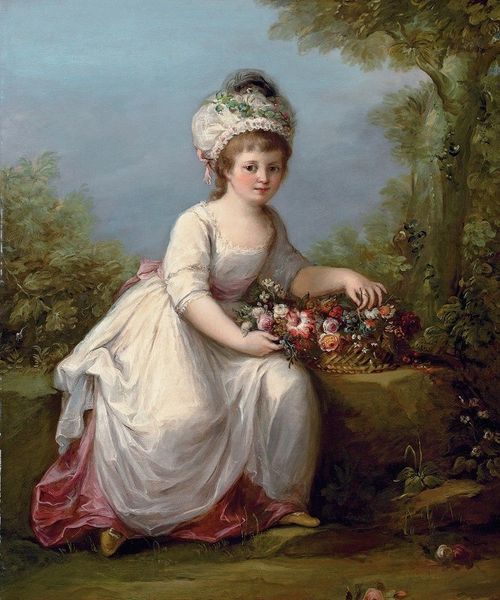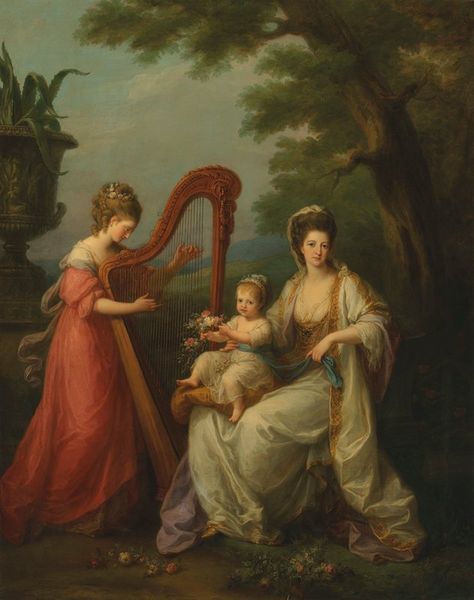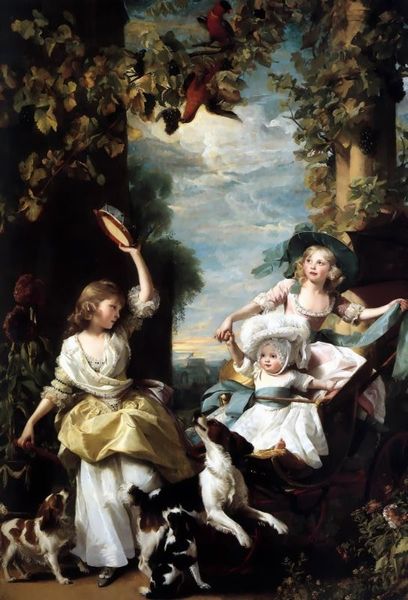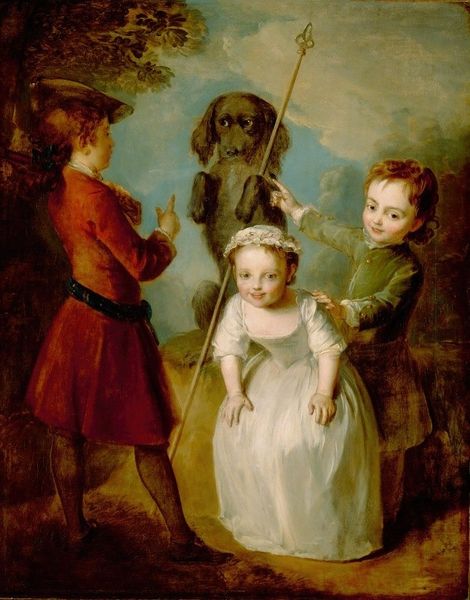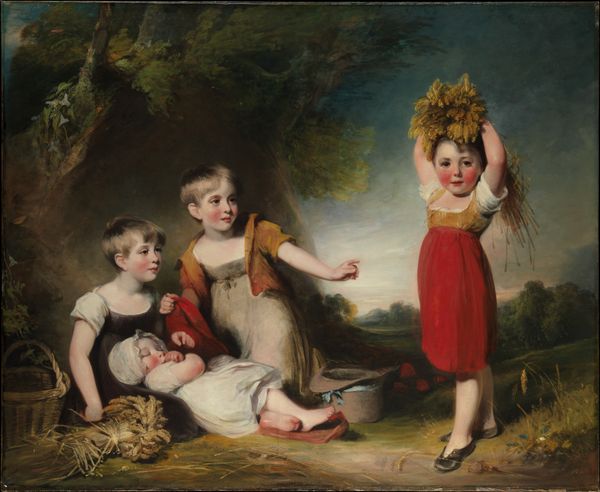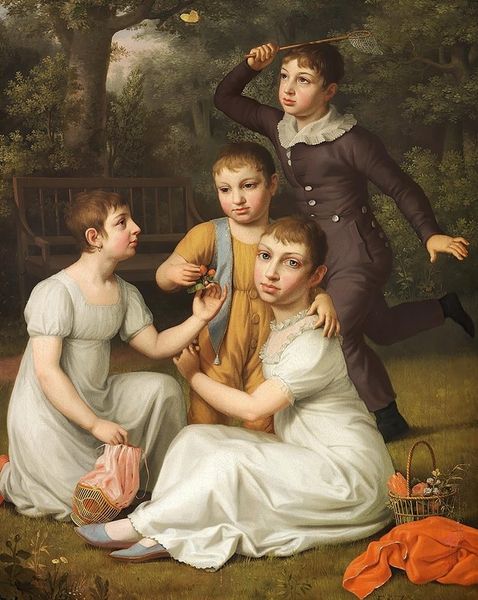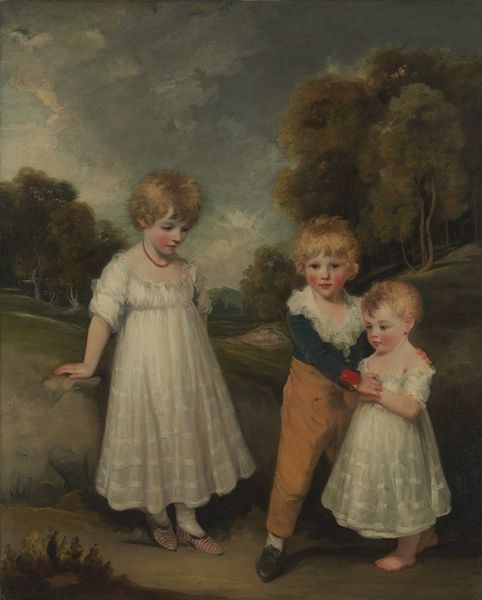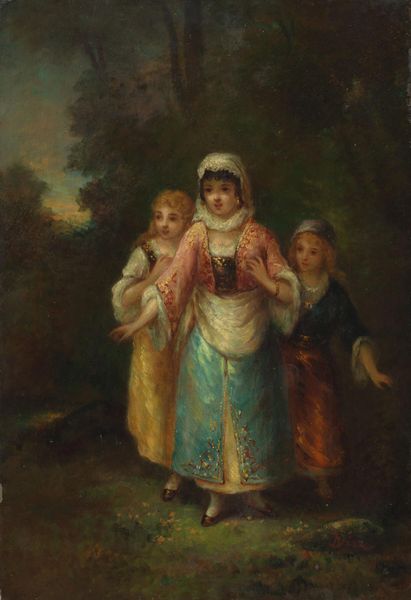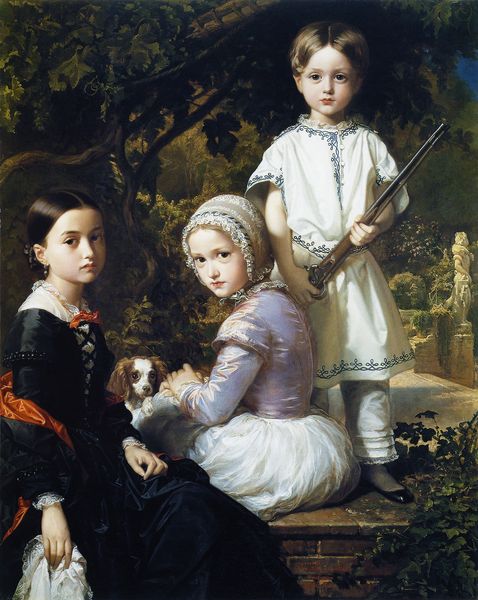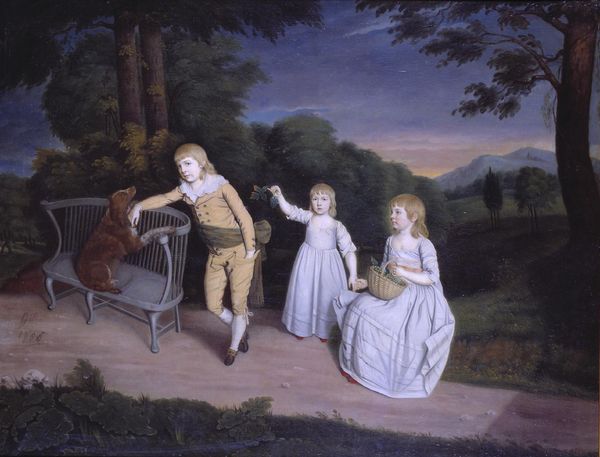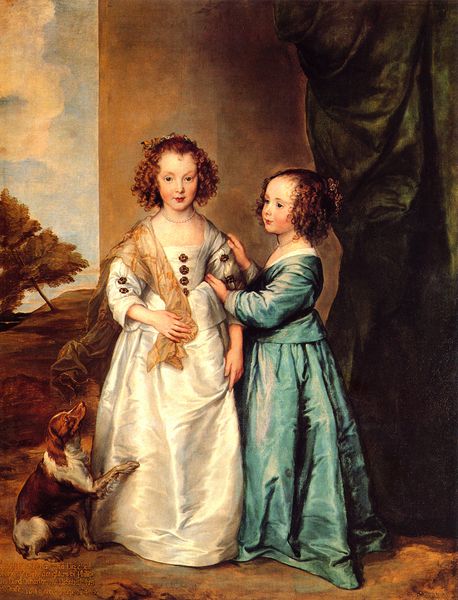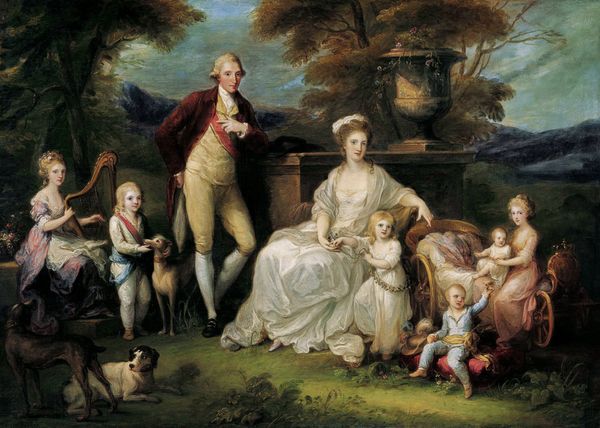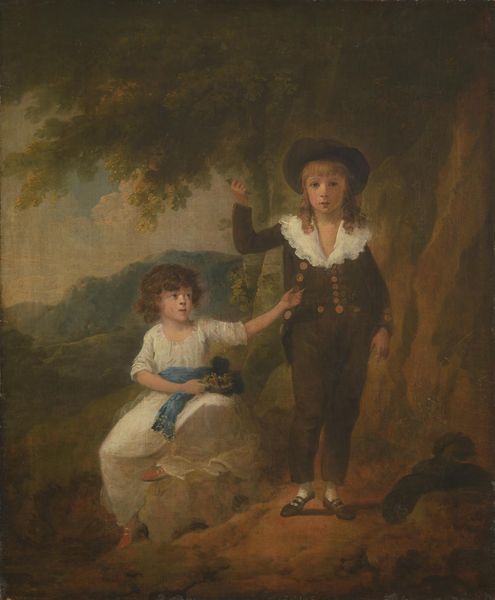
painting
#
portrait
#
figurative
#
painting
#
group-portraits
#
romanticism
#
genre-painting
#
academic-art
Copyright: Public Domain: Artvee
Curator: Isn’t this just the most charming little thing? We are looking at a work by Angelica Kauffmann entitled "Portrait of Three Children." It’s oil on canvas, featuring three adorable youngsters posing somewhat stiffly in a pastoral setting. It exudes such sweetness; the light is almost sugary, isn't it? Editor: Yes, "sugary" captures it! Though I find myself immediately thinking about the conditions of its production. Oil on canvas… the labor involved in priming, grinding pigments, layering the paints. Who financed all of this? What class of people could afford to consume these kinds of portraitures? Curator: Oh, you always bring it back to the economics, don’t you? And you’re right, this isn't some spontaneous doodle. Kauffmann was highly sought after, especially for portraits of the aristocracy. The kids here, all puffed sleeves and hopeful faces, were destined for a world of privilege, utterly disconnected from the labor that supported them. The little girl clutching flowers—so delicate—must surely represent innocence. The boy aiming with the bow... It has the ring of that classical virtue-of-arms stuff of aristocratic households at that time. What do you make of the cupid reference in contrast with that traditional theme? Editor: Those symbols, of course, are meticulously manufactured, chosen specifically to convey meaning to those who understand that visual language, those that consumed works of academic art. Each item, the bow, the flowers, they're all part of crafting an identity that reflected a certain kind of elite aspiration and family ambition. In many cases the children's life had been arranged from very young, to consolidate estates, titles or fortunes. We get very little hint of these circumstances in the picture. Curator: True, Kauffmann wasn’t about to disrupt her client's ideal vision. And even though, that boy has the world on a string at that time, while still maintaining a touch of impishness. You know? But also, the outfits themselves are interesting; the sheer volume of fabric! I do wonder who did all the actual making…all that precise needlework hidden from view. Editor: Indeed! The textile production supporting these displays was massive, a real indicator of wealth, class status. Those little ribbons and the delicate lace trims. The sheer amount of labour, predominantly by women. Were we able to see, the workroom that provided all those beautiful costumes, surely, it's an inverted reflection of what's showing on the painting here. Curator: Well, whichever the making story behind it, it’s an appealing picture nonetheless. I'm left wondering what became of those children, their gilded lives and all… Editor: Yes, all the work behind and ahead of this artwork that's rarely given its own portrait…It is as if it was hiding at the background! But then, those faces and materials can not be disassociated of their contexts.
Comments
No comments
Be the first to comment and join the conversation on the ultimate creative platform.

